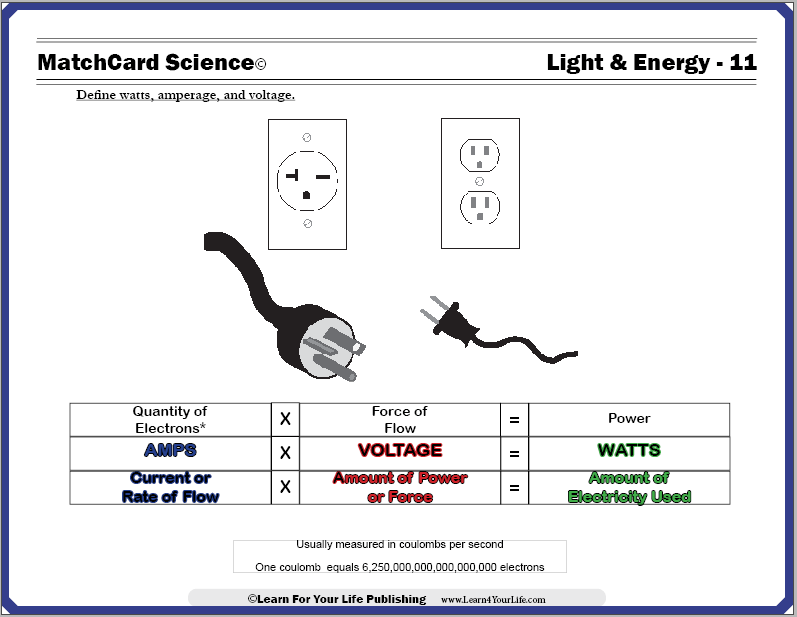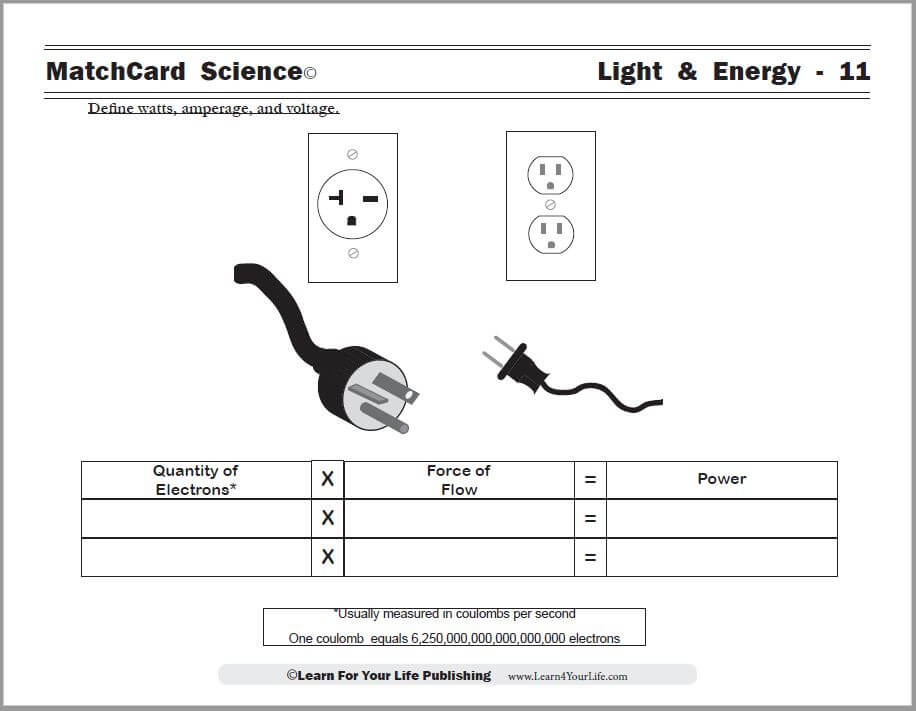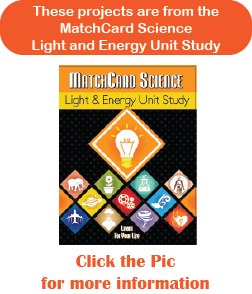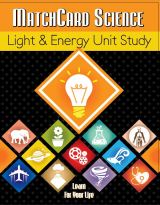Amps Volts Watts
This Matchcard compares the definitions of amps, volts, watts for the Light & Energy Unit Study for 3rd to 8th grade.

Free Download Below


Amps Volts and Watts Worksheet
Objective: Define watts, amperage, and voltage.MatchCard: Download below.
MatchCard Information Pieces define and describe minerals and rocks. Ideas for projects are listed on the instructor's page and below.
Download the Amps, Volts, and Watts MatchCard


This is MatchCard #11 of the Energy Unit Study.
Find more information on MatchCard Science below.
Opening Activities
Use one (or both) of these two activities to demonstrate force as an opening activity. The first one is a little gross and should be done outside.Big Straw vs Little Straw
- 2 small containers
- Regular straw
- Coffee stirrer
- 4 tablespoons of water
Put two tablespoons of water in each container. Use the little straw to suck up the water, then as fast as you can spit the water through the straw. Repeat with the thicker straw. Which had more force? What if you changed the amount of water?
Big Balloon vs Little Balloon
- 2 balloons - one large and one small
Inhale deeply, blow into one balloon, inhale deeply a second time and add that air to the balloon. Squeeze the balloon shut but don’t tie it. Repeat the procedure with the other balloon. The idea is to try to get the same amount of air in both balloons. Now holding them shut, open them at the same time and watch the force of the air as it rushes out. Which had more force? Would it change if the amount of air was different?
Thinking About Force and Power
In this MatchCard we will learn about force and power.
- Was there any difference in force when you did the straw or balloon demonstration?
- How can you measure it?
Scientists have to be able to describe and measure things like force and power and work done. In this lesson we will learn three terms that seem similar but help us to define and measure power.
Those terms are:
- Amps
- Volts
- Watts
Let's learn about these three important measurements.
Amps
Amps is short for amperes and refers to the rate of electrical flow. It describes the rate of the electrical current.
Amps Described
Here is a comparison that makes it easier to understand: How many cars go by your house in a minute? The higher the ampere, the greater number of cars or electrons passing a single point.
Think about the straw and water experiment. The quantity of water sent out of the straw per second could be measured in amps. The quantity of air escaping the balloon per second could also be a rate described in amps.
Amps Defined
The scientific definition for one amp is one coulomb per second. The definition of coulomb is 6.25 X 1018 electrons.
It is not necessary for elementary age students to memorize the definition of a coulomb. The take home point is that amps is a scientific term that measures the RATE of electrons flowing in a current.
Volts
Volts is short for voltage.
It measures the FORCE or power of the electrical flow.
We used the large and small straw and large and small balloon to help demonstrate force. You might compare a large raging river with a small creek. Imagine on the balloon experiment if you squeeze the balloon quickly between your hands. That would increase the force of the flow.
We can compare it to kicking (or throwing) a ball. Give it a strong kick and a weak kick.
Electrical Volts
Look at a regular household plug. It is 110 volts. Now look at the 220 volt plug on your refridgerator or washer and dryer. It takes a lot more electricity to run your clothes dryer than your hair drier.
Volts and Batteries
Common cylinder shaped batteries like AA, AAA, C and D have 1.5 volts. That’s a lot less than your hair drier. Even though an AA battery and an AAA have the same volt (or force) they have different sizes and different amounts of electricity generating metal, so they don’t last the same amount of time. But if you put two batteries in a flashlight, you will have 3 volts.
Look at a 9 volt battery. It has as much force as 6 of your cylinder batteries.
Watts
Watts is short for wattage.
It is the amount of power produced or electricity consumed.
The scientific definition is one joule per second.
Household electrical use is often measured in kilowatts or 1000 watts.
Project: Watts the Power?
Go to an appliance store and note the difference in kilowatts for the different appliances.
Amps, Volts and Watts
Amps X Volts = Watts
Scientifically this is written:
VI = P
History, Please
Wonder where the names amps, volts, and watts came from? They are named after people who discovered them. Look at these names and dates:- André-Marie Ampère (1775–1836) French
- Alessandro Volta (1745–1827) Italian
- James Watt (1736–1819) Scottish
MatchCard Science
How To Use MatchCards

Download the FREE MatchCard Science Instructor's Guide and see how MatchCards can make building their science knowledge base fun.
Light and Energy Unit Study

Download the entire Light and Energy unit study.
12 Science Unit Studies

Chemistry is only one of twelve complete unit studies for kids in 3rd to 8th grade.
Comprehensive objectives, hands-on projects, suggested science fair experiments, and the fun game-like MatchCards keep them interested in learning science. See all twelve MatchCard Science Unit Studies.
About Our Site
Hands-On Learning













